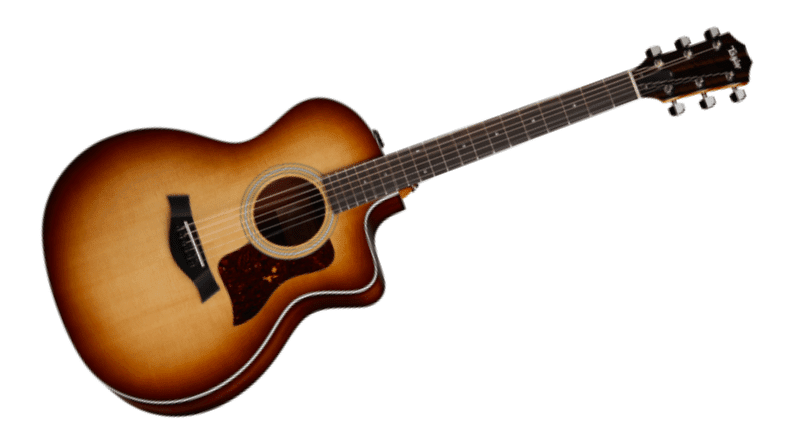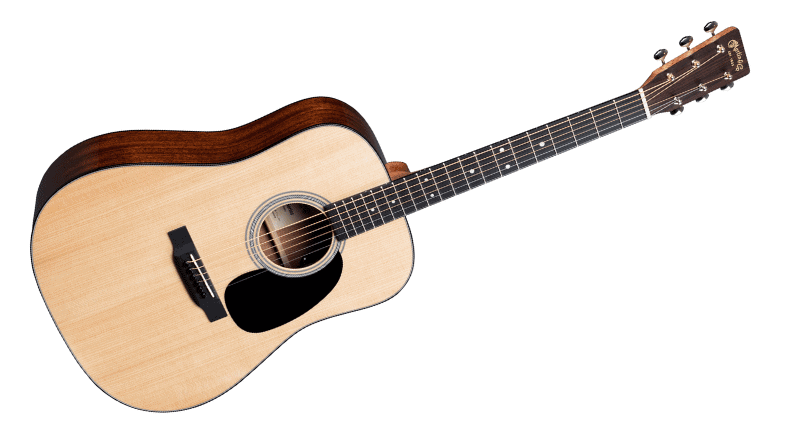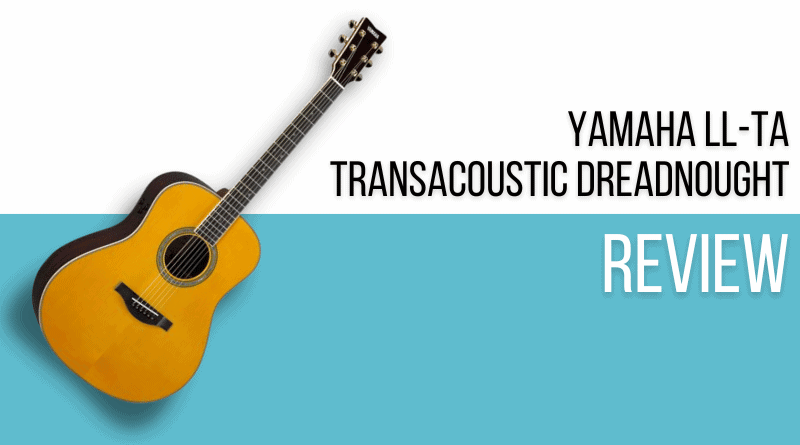Here at KGR we’ve covered a lot of Yamaha guitars in the past, mostly their budget models, but regardless of the pricetag, we’ve never been let down. Because of their stellar reputation for student grade instruments, Yamaha tends to get overlooked when it comes to high end models, and we think it’s about time that this changed.
The Yamaha LL-TA Transacoustic Dreadnought is the perfect starting point for this change in outlook. We named it as our Editor’s choice in our roundup of the best Yamaha acoustics, and it’s not hard to see why.
In this KillerGuitarRigs review, we’ll be taking a deep dive into the Transacoustil to learn more about its features, build quality, and its tones. If you’re in the market for a pro grade guitar, you’re not going to want to miss this.
Read more about our review process.
Contents
Yamaha LL-TA Transacoustic: Who Is This For?
The Yamaha LL-TA Transacoustic Dreadnought is a gorgeous dreadnought style guitar that’s perfect for intermediate and advanced guitarists. It’s a forgiving model, so newcomers will find it to be easy to play, but the price tag might be the limiting factor for novice guitarists.
It features built-in effects, and some of the best materials and construction quality you’ll find anywhere, making it a perfect choice for working musicians looking for a real workhorse guitar at an attainable price point.
Appearance / Features / Controls
The LL-TA is a dreadnought model with a little more in the way of embellishments than we usually see on Yamaha models. It had a fantastic abalone rosette, and simple, but well applied binding.
This is one of the brand’s flagship Japanese built models and in terms of quality, this was really apparent. We found not a single flaw in the finish, and even when looking through the soundhole, we saw nothing but perfectly finished wood.
Its body was made with a combination of some of the best tonewoods around including a solid Engelmann spruce top, and solid rosewood on the back and sides. The top was torrefied using Yamaha’s ARE process, designed to give it vintage broken in tone right out of the box.
The neck was made with a 5 ply array of mahogany and rosewood, which looked absolutely sensational. Topping the neck was an equally gorgeous ebony fretboard.
One of the coolest features is the onboard FX unit. It featured reverb and chorus, and most amazingly, they don’t require external amplification to use, allowing you to add these effects to your natural acoustic tone.
It had gold-plated Grover style tuning machines. Interestingly they were unbranded, presumably made in house by Yamaha, and while at first we thought we’d have loved to have seen actual Rotomatics, the performance of the stock machines was exceptional.
Performance / Sound
We spent quite a long time with this guitar during the extended review, and we’d happily put it up against any Martin or Taylor even at double the price. It offered a massive voice thanks to the widened L-type body, which really added tons to the bottom end without having to add any noticeable bulk to the guitar.
It was an incredibly responsive guitar, thanks in large part to the artificially aged top. Engelmann spruce is one of the best acoustic tonewoods out there, and the ARE treatment really brought it to life on this guitar. It had the kind of character you normally only find in well loved guitars, and this was right out of the box – with a few years of use it will only get better.
Like most dreadnoughts, it really performed best when strummed. Its projection was absolutely huge, and the tones were rich and detailed across the entire frequency spectrum.
When played fingerstyle it was articulate, and offered superb note separation. We loved the huge sustain, and the detail was far beyond expectations.
Out of the box, the setup was fantastic. We’ve often praised Yamaha’s quality control for guitars from their Chinese facility, and the quality of this Japanese made model managed to surpass that of their cheaper models by a huge gulf – no mean feat.
This translated into amazing playability. The action was set perfectly, with a nice low height, while still avoiding fret buzz. It came with light gauge Elxir Nanoweb strings, which we thought were perfectly paired. The light gauge kept it comfortable, but we didn’t find that any tone was sacrificed. If we kept it for longer, we’d likely replace the strings with the same Elixir .012s.
Other Guitars to Consider
The Yamaha LL-TA Transacoustic Dreadnought is an absolute gem of a guitar, but as with any model over a certain price point, it really makes sense to take a look at some alternatives before committing to your decision. Below we’ve listed a couple of our favorites.
Taylor 214CE-k

The Taylor 214CE-k is a stunning Grand Auditorium style acoustic with bags of character. It offers beautiful, bright tones with incredible articulation thanks to its Solid sitka spruce top and koa back and sides. The fit and finish is superb, making use of high end materials like ebony for the fretboard, and GraphTech Nubone for the nut and saddle. For easy amplification it’s equipped with a Taylor ES2 system, which we’ve always found to be one of the best stock acoustic electronics setups.
Martin D-12E Road Series

The Martin D-12E Road Series is an affordable Mexican made version of the iconic D-18. It features all solid woods, with Sitka spruce on top and sapele on the back and sides. This combination of solid tonewoods results in a rich, detailed voice, amazing sustain, and tons of projection and character. It has Fishman MX-T electronics, and even comes with a quality gig bag for protection during transport and storage.
Final Thoughts on the Yamaha LL-TA Transacoustic
We’ve always loved Yamaha acoustic guitars at KGR, and getting to spend time with the Yamaha LL-TA Transacoustic Dreadnought was a real treat. It offered true high end playability, and the build quality was impeccable.
Typically at this price point, many players gravitate towards Martin, Taylor, and Gibson, but we urge you to consider this Yamaha if you’re looking to spend between $1000 and $1500 on an acoustic guitar.
Not only is it made with all solid woods, but it’s built with the highest quality materials around. To find solid rosewood back and sides from the more mainstream premium guitar brands you’d be looking at spending at least double the price of the Yamaha.
It’s comfortable, forgiving, and it even has built-in FX – we think it’s a real player’s guitar and it gets our highest recommendation.


